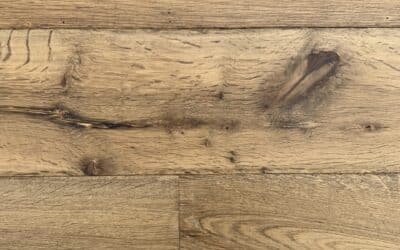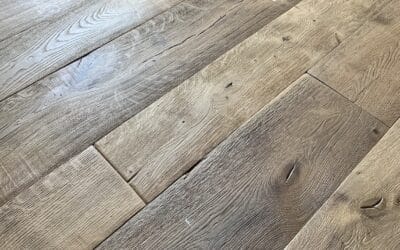Engineered oak timber flooring is a popular choice for homeowners and businesses due to its durability and versatility. When choosing engineered oak flooring, one important decision is whether to opt for an oiled finish or a lacquered finish. Here are the pros and cons of each option:
Oiled Oak Flooring Pros:
- Natural look: Oiled oak flooring has the most natural and organic appearance.
- Easy maintenance: Oiled oak flooring is relatively easy to maintain, as it only requires occasional re-oiling to keep it looking its best. This can be done using a special oil and a soft cloth, and the process is generally quick and straightforward.
- Better timber experience: Oiled oak flooring has a softer and more comfortable feel underfoot than a lacquered floor because you are in direct contact with the timber. An oiled floor will never crack, blister or flake off, because there is no coating to sit on top.
- Pore expression: The open-pored wood regulates humidity levels for a heathy indoor climate. As the room increases and decreases in humidity, the flooring will take on more or less moisture.
- Environmental benefits: Oiled oak flooring is considered to be more environmentally friendly than lacquered flooring, as it does not contain any harmful chemicals or solvents.
- Spot repairs: Many oiled finishes can be spot-repaired, eliminating the need for future sanding and refinishing.
Oiled Oak Flooring Cons:
- Susceptible to water damage: Although it can be largely managed, oiled oak flooring is more prone to water damage than lacquered flooring. It may not be the best choice for areas of the home or business that are prone to moisture, or are not likely to maintain the floor.
- Requires frequent maintenance: While oiled oak flooring is relatively easy to maintain, it does require more frequent attention than lacquered flooring in order to keep it looking its best. Without maintenance, an oiled floor will be more susceptible to staining. A typical maintenance program for a residential home would mean oiling the floor every 24 months.
- Can’t use standard cleaners: Standard cleaning products will lift oils. An oiled floor requires specific cleaning products to ensure effective care.
Lacquered Oak Flooring Pros:
- Durability: Lacquered oak flooring is more durable and resistant to wear and tear than oiled flooring, making it a good choice for high-traffic areas.
- Easy maintenance: Lacquered oak flooring is relatively easy to maintain, as it only requires occasional dusting and sweeping to keep it looking its best.
- Resistant to water damage: Lacquered oak flooring is more resistant to water damage than oiled flooring, making it a good choice for areas of the home or business that are prone to moisture.
- Can be natural looking: The latest matt lacquer floor coatings can look extremely natural.
Lacquered Oak Flooring Cons:
- Artificial appearance: Lacquered oak flooring can have a more artificial or synthetic appearance than oiled flooring, which may not be appealing to those who prefer a more natural look.
- Hard feel: Lacquered oak flooring can have a harder and more unforgiving feel underfoot than oiled. When touching a lacquered floor, you are in contact with the lacquer, rather than the timber.
- Repairs are more difficult: Spot repairs and minor scratches are not as easy to repair as with oiled floors.
- Refurbishment is costly: Most lacquered floors eventually require refurbishing which can be a disruptive and costly exercise. Refurbishing a lacquered floor requires removing all furniture, sanding and refinishing. (A lacquered finish should last 10 to 15 years).
- Environmental impact: Contains chemicals: Lacquered oak flooring is made with chemicals and solvents, which can be harmful to the environment
Ultimately, the choice between oiled and lacquered oak flooring comes down to personal preference and the specific needs of your space. Consider the look and feel you want for your floor, as well as the level of maintenance you are willing to commit to and the environmental impacts of your choice.


